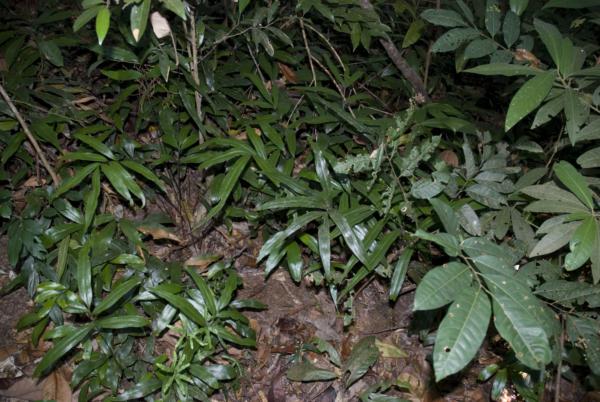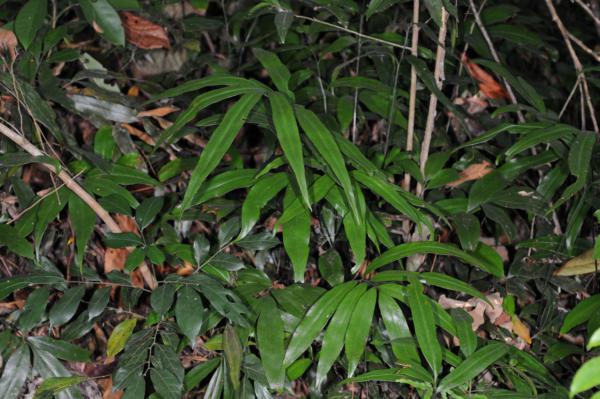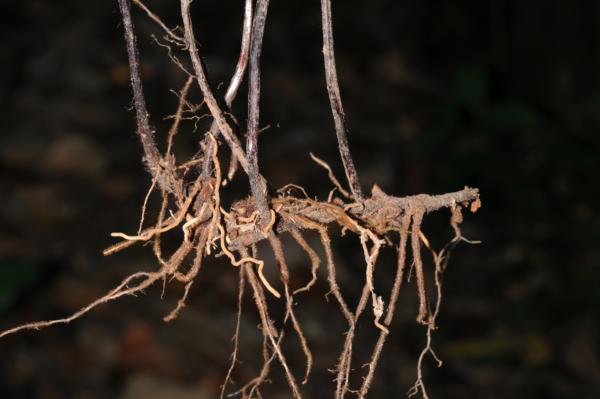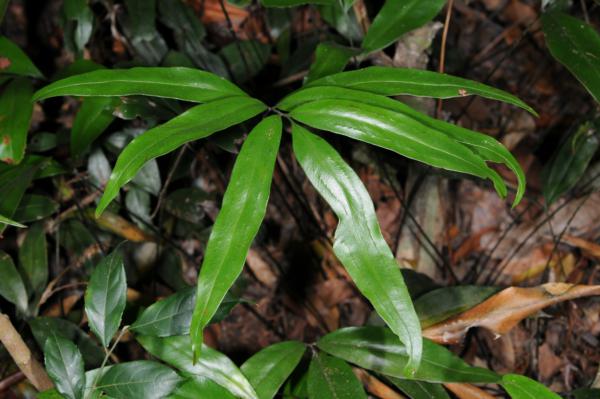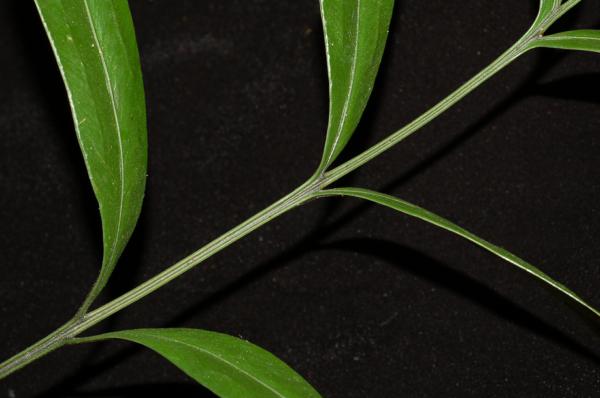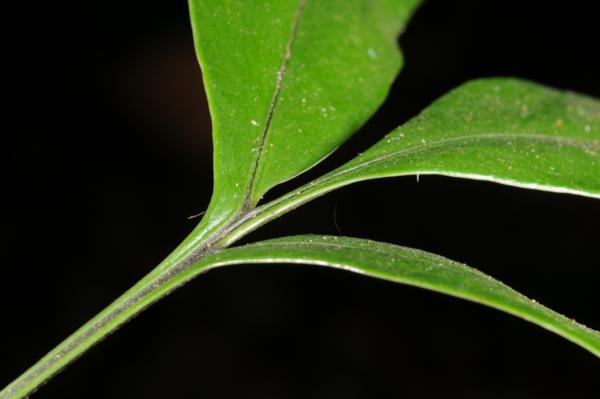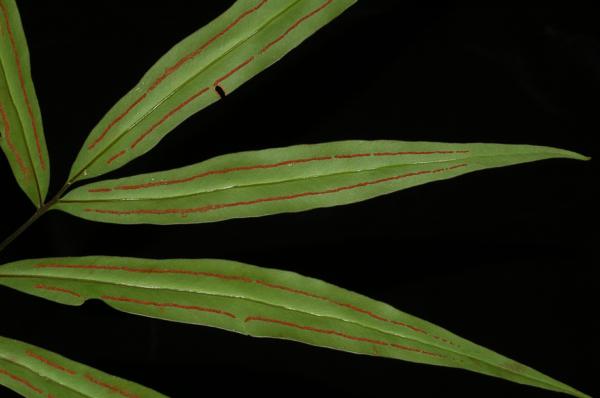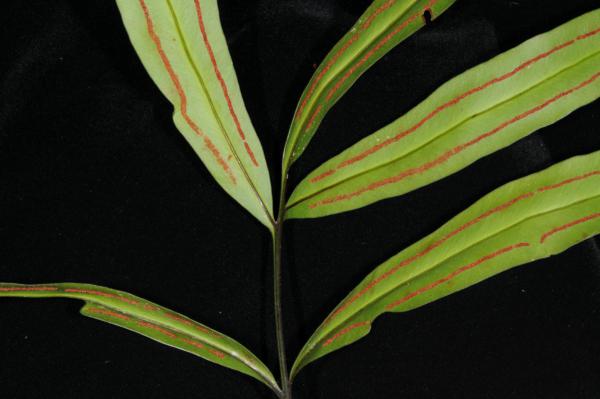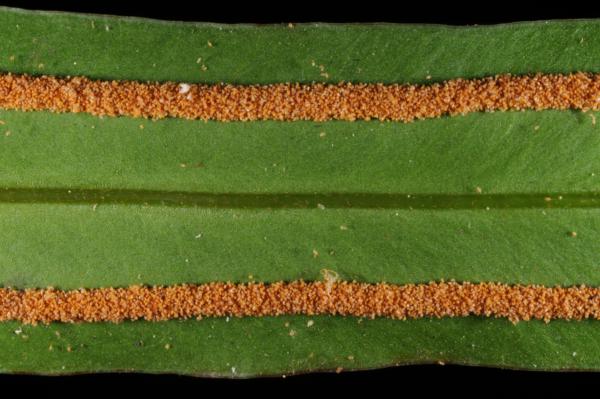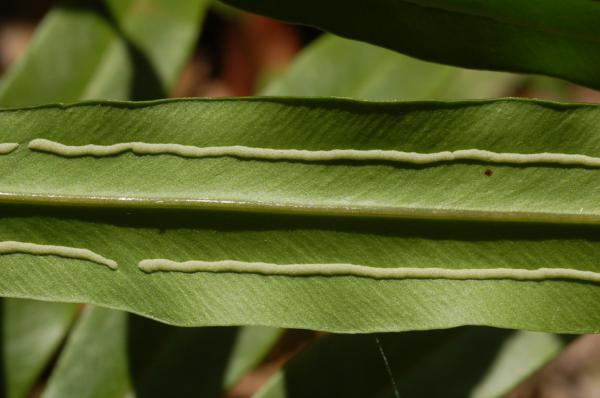
Taenitis blechnoides (Willd.) Sw.
Family
Pteridaceae, subfamily Pteridoideae
Nomenclature
Taenitis blechnoides (Willd.) Sw., Syn. Fil.: 24, 220. 1806.; Bedd., Handb. Ferns Brit. India: 410, f. 242. 1883; Christ, Bot. Tidsskr. 24: 104. 1901; C.Chr., Bot. Tidsskr. 32: 348. 1916; E.Smith, J. Siam Soc. Nat. Hist. Suppl. 8: 8. 1929; Tardieu & C.Chr., Fl. Indo-Chine 7(2): 134, f. 16, 3–4. 1939; Holttum, Rev. Fl. Malaya ed. 1, 2: 586, f. 346. 1955 [‘1954’]; Holttum, Dansk Bot. Ark. 20: 32. 1961; Holttum, Blumea 16: 89, f. 1. 1968; Seidenf., Bull. Nat. Hist. Siam Soc. 19: 87. 1958; Ching, Fl. Reipubl. Popularis Sin. 2: 279. 1959; Tagawa & K.Iwats., SouthE. Asian Stud. 5: 107. 1967; Tagawa & K.Iwats., Fl. Thailand 3: 186. 1985; Boonkerd & Pollawatn, Pterid. Thailand: 104. 2000; Boonkerd & Pollawatn, Pterid. Thailand: 125. 2000; Newman et al., Checkl. Vasc. Pl. Lao PDR: 32. 2007. – Pteris blechnoides Willd., Phytogr.: 13, t. 9, f. 3. 1794.
Description
Rhizome creeping, up to 5 mm diam., covered with bristles in apical portion; bristles dark brown to nearly black, shining, stiff, up to 3 mm long. Stipes stramineous to green upwards, castaneous in lower part, glabrous, in larger plants up to 60 cm long. Laminae simply pinnate, or simple, up to 40 by 30 cm; groove of rachis decurrent to that on costae; lateral pinnae 1–8 pairs, alternate, linear, sub falcate, gradually narrowing towards both sides, caudately acuminate at apex, very narrowly cuneate at base, stalked (or upper ones sessile), entire or slightly undulate at margin, sometimes involute, up to 25 by 3 cm in fertile pinnae; sterile pinnae broader, up to 5 cm broad; costa distinctly raised on lower surface, sunken on upper surface; veins copiously reticulate without included veinlets; texture thickly papyraceous to chartaceous, glabrous. Sori midway between costa and the margin of pinna, rarely interrupted , 1–1.5 mm in breadth.
Distribution in Thailand
NORTHERN: Phitsanulok; SOUTH-WESTERN: Phetchaburi; CENTRAL: Saraburi, Nakhon Nayok; SOUTH-EASTERN: Chanthaburi, Trat; PENINSULAR: Chumphon, Ranong, Surat Thani, Phuket, Nakhon Si Thammarat, Trang, Satun, Songkhla, Yala, Narathiwat.
Distribution in Laos
Champasak, Khammouane, [Peunongs].
Distribution in Cambodia
Kampot, Koh Kong, Kompong Chhnang, Mondulkiri, Sihanoukville.
Wider Distribution
Tropics from Sri Lanka to Fiji.
Ecology
On rather dry ground in not so dense forests at low or rarely medium altitudes.
Proposed IUCN Conservation Assessment
Least Concern (LC). This species is widespread and not under any known threat.
Voucher specimens - Thailand
Middleton et al. 4670, Chanthaburi, Khao Khitchakut National Park (E); Middleton et al. 4596, Trat, Ko Chang, Thanmagon Waterfall (E); Maxwell 87-248, Songkhla, Ko Hong Hill (P).
Voucher specimens - Laos
Harmand 274, Champasak, Se-Moun (P); Petelot 4110, Khammouane, Pac Hin Boum (P).
Voucher specimens - Cambodia
Stone 9261, Kampot, Kamchay (P); Middleton & Monyrak 680, Kampot, Bokor (A, P); Long et al. CL498 & CL530, Koh Kong (P); Poilane 28796, Kompong Chhnang (P); Schnell 10272, Mondulkiri (P); Schnell 10103 bis, Kompong Som [Sihanoukville] (P).
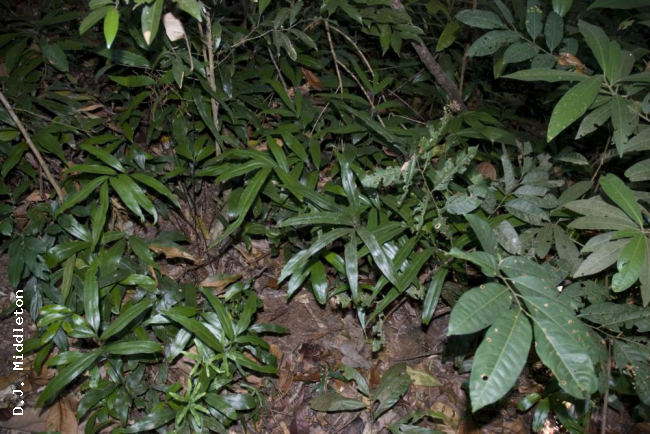
Habit
Habit
Rhizome
Frond
Upper surface of rachis
Upper surface of rachis and pinnae
Pinnae from beneath
Rachis and lower surface of pinnae
Sori
Young sori
Site hosted by the Royal Botanic Garden Edinburgh. Content managed by Stuart Lindsay, Gardens by the Bay, Singapore and David Middleton, Singapore Botanic Gardens. Last updated 24 January 2012
